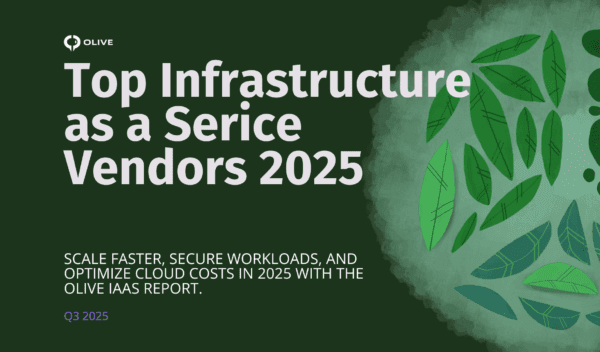Save Time on Technology Evaluations, and Find the Right Software for the Business Needs
There’s nothing worse than spending too much time and resources during a technology evaluation.
How do you make sure everyone uses software you buy? At Olive, we believe that it all comes down to the quality of your evaluation process. The quality of your evaluation depends on reducing three things: complexity, bias and time taken to purchase the best-fit solution. This post aims to provide ways you can reduce these three things.
1. Reduce Complexity
The first rule of tech evaluations is this: know what tech you are looking for and what tech you are looking at.
To know what you are looking for, you need to know the needs and requirements of everyone who will be using the tech you’re going to purchase. The issue here is that your organization is probably complex and difficult to coordinate. To know what you are looking at, you need to understand the tech category you are evaluating. The issue here is that the tech landscape is increasingly complex and difficult to navigate. Let’s unpack these a little further.
1. Complexity of your organization
It is not uncommon that organizations are difficult to coordinate during tech evaluations. However, to ensure that the tech you purchase at the end of your evaluation is used by everyone you intended to use it, you need to ensure all needs and requirements from across your organization are taken into consideration. The best way to do this is to collate all the needs and requirements from different individuals, teams and departments. These needs and requirements can be ranked to determine how important it is for a product to satisfy them.
It is important to note that it is likely that trade-offs will likely be made because it is unlikely that a solution will satisfy everyone’s needs and requirements. But, by collating and ranking all needs and requirements, you can make informed trade-offs rather than uninformed ones.
2. Complexity of the tech landscape
The tech landscape is complex for two main reasons.
First, every tech category is saturated by innumerable products. These products are often functionally the same and difficult to differentiate as a result. The best way to reduce the impact of this complexity is to understand that most tech most categories follow a power law. That is, a minority of products/providers will dominate their respective category because they have the most complete and comprehensive solutions. It should be your aim during an evaluation to identify these dominant products/providers as soon as possible.
The second reason for the tech landscape being complex is that there are many overlapping and adjacent tech categories. This makes it difficult to pin-point the type of solution you actually need. The best way to overcome this is to know what you are not looking for. That is, being crystal clear about your needs and requirements are as an organization will help you identify types of solution which you do not need to consider during your present evaluation.
2. Reduce Bias
Bias during an evaluation prevents you from getting the tech product which truly fits the needs of your organization. As a result, you should aim to keep your evaluation as objective and impartial as possible. This means reducing the amount of bias influencing your evaluation.
There are three sources of bias that you should be cautious of during an evaluation:
1. Sales teams
As identified earlier, most products in a category are functionally the same/similar. This makes it difficult to differentiate products in a category. The role of a provider’s sales team in this instance becomes to understate the functional likeness of their product relative to others in their respective category, and overstate the ability of their product to fit the needs of your organization.
While there are many sales teams which have a deep understanding of their products, it is likely that their engineering or product teams are better placed to determine whether their products satisfy the needs and requirements of your organization.
2. Peer reviews
Peer review sites like G2 Crowd, Gartner Peer Insights and Capterra are an important resource for most tech evaluations because of the wealth of knowledge they contain. However, during your evaluation you should be conscious of the inherently subjective nature of reviews. This is especially important in the sense that reviews are not specific to the needs and requirements of your organization. Just because a product satisfies or does not satisfy the needs of another organization, it does not mean the same will be true for your organization.
Of course, there are general requirements which most organizations will need to be sufficiently satisfied (e.g. quality of customer support), but you will certainly have specific needs or use cases.
3. Team members
There are two main cognitive biases that you need to be conscious of when it comes to those people from your organization contributing to the evaluation process.
The first is the “anchoring bias”. This is when people are over-reliant on the first piece of information they hear. In the context of a tech evaluation, this can be inhibit you finding the solution which best fits your needs if everyone becomes emotionally attached to the first decent product you evaluate. You should aim to remain as impartial and neutral as possible throughout your evaluation process. The best way to do this is to adopt a data-driven approach to evaluations whereby solutions are compared on the same data points.
The second cognitive bias is the “choice-supportive bias”. This is when someone chooses something and remains positive about the choice despite obvious flaws in that choice. This will be especially relevant where your evaluation is aiming to replace a product that a team member chose to purchase in the past, or where another department in your organization has chosen to use a specific product and they are encouraging you to do the same. In such instances, you should aim to reduce the impact of such beliefs on your evaluation. Again, the best way to do this is to adopt a data-driven approach to evaluations whereby solutions are compared on the same data points.
3. Reduce time spent on Technology Evaluations
Evaluations can take months (and even quarters) to complete. In the first section above, we established how you can reduce the complexity of a tech evaluation. Reducing the complexity of an evaluation will reduce the time taken to purchase the best-fit solution. However, there are two other notable methods which can help.
1. Prioritize and focus
There are two levels to this.
First, if your organization is undergoing a digital transformation, you need to decide which tech you should evaluation first. Having several evaluations running simultaneously (without sufficient project coordination) can confuse the process. As a result, you should prioritize evaluating the tech categories according to the ones which will have the most immediate impact on your organization’s productivity and profitability.
Second, once you have decided which tech category to evaluate first, you need to determine which organizational needs and requirements you need to prioritize throughout the evaluation. The best way to overcome this is to have a ranking system whereby all stakeholders across your organization rank all requirements and needs according to their importance to them.
2. Automate
Tech evaluations involve many mundane and repetitive tasks. For example, to ensure that your evaluation is sufficiently comprehensive, you’ll likely need to find responses to all the needs and requirements identified across your organization for more than 10 providers. This involves looking at feature pages on providers’ websites, reading analyst reports and talking to providers’ sales teams. You’ll need to collate all the responses as well. Being able to automate this collation process will mean that you can reduce the time taken to objectively determine the best-fit solution for your organization.
Explore ways you can improve the outcome of your Technology Evaluations
We did this by discussing how you can reduce three factors: complexity, bias and time taken to purchase the best-fit solution for your organization.
Need help on your next evaluation?
Olive is purpose-built to help enterprises evaluate technology. From requirement management through to vendor selection, Olive provides a single platform for collaboration and knowledge sharing. With all of your requirements and vendor capabilities in one place, you can make fast, accurate decisions based on data, not bias. Try us out today!





